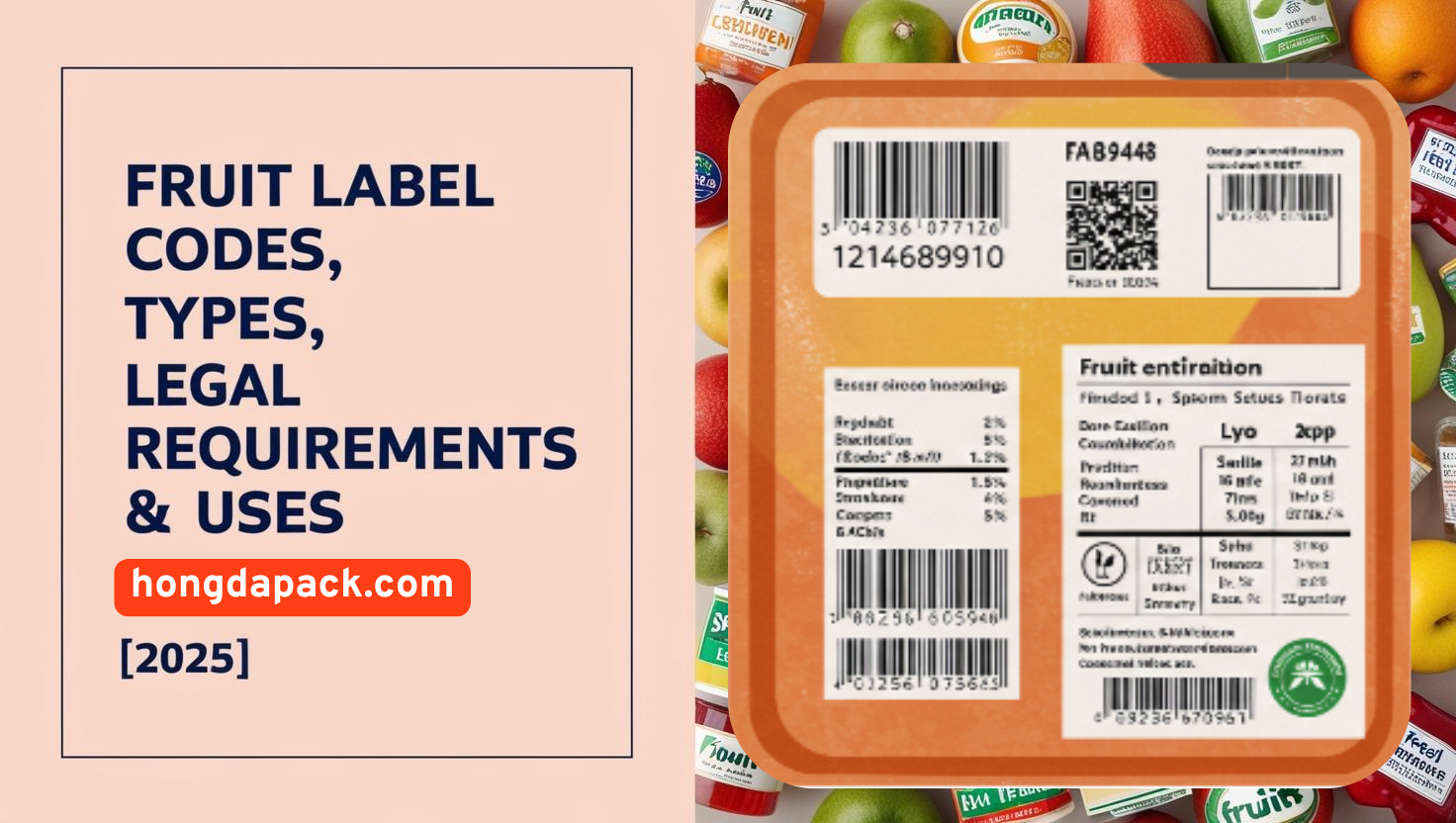
When you go out for shopping and notice tiny stickers on the fruits. They are called fruit label stickers. Now the question arises that, what’s the point of them? They help stores track produce to provide basic fruit information to the customer. That information includes, the procedure of growing that particular fruit, which means, that labels don’t just be there to be sticked on the fruit, but they have a reason to be there.
In this blog, we will dive deeply into how to choose the appropriate fruit label for different fruits, what the PLU (Price Look-Up) codes mean, whether it’s safe to eat fruit with or without a sticker, and the legal requirements you need to know. the meaning behind each label numbers and reply to questions such as “Is it safe to consume the fruit with the label sticked on?”
Whether you are a fruit seller, farmer or own a packaging company, opting for the correct fruit label stickers can make a massive difference. However, if you are buying in bulk, collaborating with a wholesale fruit label supplier is the best way to get started.
You must have noticed 4 to 5 little digit codes on fruit label stickers. Ever wondered what they meant? Well, they are not just random, but they are a part of the PLU code system. The meaning of them is “Price Look-Up”. These numbers enable the cashier to ring up your purchased fruit rightly and also provide you with the information about the growth of the fruit. They are managed by the International Federation for Produce Standards (IFPS).
Here’s what they mean:
· 3-digit codes – PLU codes in the 3000–3999 range assigned to standard fresh produce items.
In a nutshell, the next time you go to the grocery store and see a sticker on any fruit, you will be able to determine its growth place by looking at the fruit label code.
All PLU codes must be registered with IFPS, and organic stickers (5-digit codes starting with 9) must comply with the USDA’s National Organic Program. Inks, adhesives, and substrates used for fruit label stickers need FDA food-contact approval (21 CFR) or meet EU Regulation No 1935/2004 on materials in contact with food. If you sell across borders, remember Country-of-Origin Labeling (COOL) rules, like USMCA requirements in North America or mandatory bilingual labels in Canada.
Different fruits come in various shapes. Therefore, you have to be careful before creating a fruit label sticker.
These fruits have smooth textures, which makes them perfect for traditional fruit label stickers. Always remember to use durable and water-proof labels. Why? because if you do so, they won't peel off while washing or being transported.
Explore a range of customized self-adhesive labels for this category.
The shape of bananas is long and usually sold in bunches. However, they ripen rapidly. Use a label that is adhesive enough to stick well to their soft peel yet easy to take off.
Berries and Grapes are typically sold in containers. Therefore, instead of putting labels on each berry and grape individually, put the label sticker directly on the packaging cartons. Don’t worry; it will be the same as labeling a particular fruit separately.
These two fruits have uneven skin, making labeling difficult. To get the job done, you will need strong glue to adhere the stickers to uneven parts of the fruit.
If the fruit is as big as a melon or pineapple, utilize them for other brands’ publicity or even QR codes for more information.
|
Feature |
Benefit |
Typical Use Case |
|
GS1 Barcode |
Automated pricing at POS |
Supermarkets, large chains |
|
QR Code |
Traceability & marketing link |
Direct-to-consumer apps |
|
RFID Tag |
Contactless inventory control |
Bulk distribution centers |
Below is a checklist to help you opt for the optimal label:
1. Fruit Type - Smooth or rough? Huge or tiny? Different fruits need different labels.
2. Surface Stickiness—Like bananas, stick those label stickers that stick rightly yet come off easily.
3. Water and temperature Resistance – Fruits are usually washed and stored cold.
4. Label Size – The fruit should be large enough to read but hide not much of the fruit.
5. Material Choice – Use eco-friendly paper card stock labels to decrease waste and remove smells from containers.
6. Supplier – Collaborate with a trust-worthy wholesale fruit label supplier for the sake of quality and cost-efficiency.
Opting for the correct label isn’t just about looking good. It dramatically impacts how your fruit is stored, displayed, and sold. For farmers and retailers, here is what a good fruit label sticker means:
This is a frequently asked question, and we reply to you with yes. It is totally safe to eat the food with no label on it.
Yes, it is safe to consume a fruit with a sticker on it. Nonetheless, it’s beneficial to take it off before biting the fruit. In other words, mistakenly eating the fruit with the label on it won’t damage you in any way. But peeling it off before eating a particular fruit would be better.
We are providing a few tips below:
Opting for the correct fruit label stickers might seem small, but it has a huge impact. From helping customers understand what they're purchasing to launching your brand, labels matter a great deal.
Whether you are labeling an apple or a packet of blueberries, always keep in mind:
· Consider adding Advanced options like barcode labels or QR code traceability
Moreover, don’t forget to collaborate with a trusted fruit label supplier. It can save your valuable time, money, and headaches. You will get better fruits, expert help, and all the fruit label codes you need to make your business successful.
When you go out for shopping and notice tiny stickers on the fruits. They are called frui
READ FULL